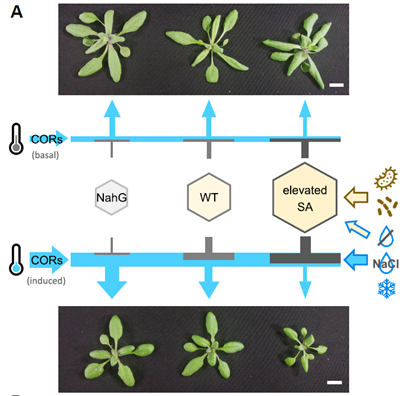
Altering cold-regulated gene expression decouples the salicylic acid–growth trade-off
Plant Science Research WeeklyEnhancing plant defense against pathogens and pests often incurs a cost to essential physiological functions such as growth and reproduction, creating a trade-off. This phenomenon is evident in genetic studies across various plant models and agricultural breeding programs. Salicylic acid (SA) is a well-known…

Methyltransferase TaSAMT1 mediates wheat freezing tolerance by integrating brassinosteroid and salicylic acid signaling
Plant Science Research WeeklyTemperature extremes, such as cold stress, severely affect wheat (Triticum aestivum) productivity and quality by impairing its vegetative and reproductive growth. Several phytohormones have roles in cold stress, such as brassinosteroids (BRs) and salicylic acid (SA). However, how BR interacts with SA…
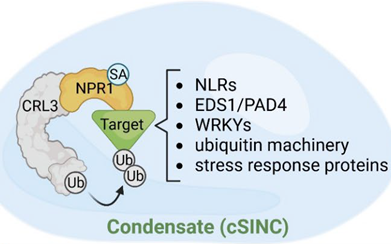
Review: Salicylic acid in plant immunity and beyond
Plant Science Research WeeklySalicylic acid (SA) is a pivotal natural compound in plant science and finds applications in herbal medicine; specifically, aspirin, the renowned anti-inflammatory drug and pain reliever, is a derivative of SA. As summarized in this review by Spoel and Dong, within plants SA serves as a crucial phytohormone…
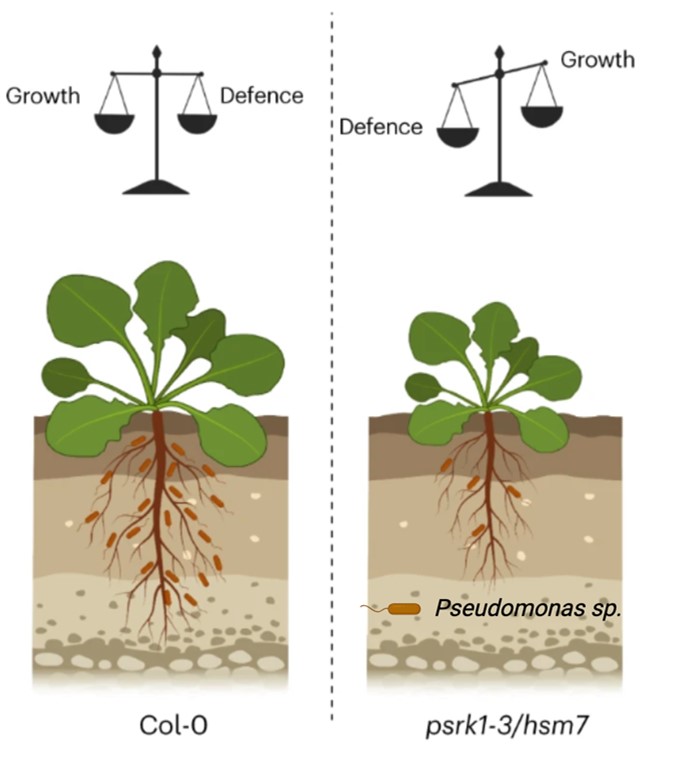
PSKR1 balances the plant growth–defence trade-off in the rhizosphere microbiome
Plant Science Research WeeklyPlants are colonized by numerous beneficial microorganisms in the rhizosphere, including Pseudomonas fluorescens, that provide benefits including nutrient acquisition and pathogen protection. Host plants must tune their immune systems to restrict microbial overgrowth, while avoiding overstimulation of…
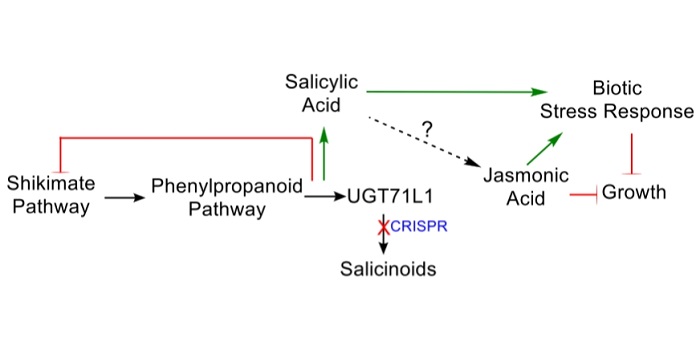
UGT71L1 in Poplar Connects Salicinoid and Salicylic Acid Metabolism
The Plant Cell: In a NutshellGordon et al. report that knock-out of a recently discovered enzyme for salicinoid biosynthesis in poplar leads to changes in salicylic acid and jasmonic acid metabolism and has unexpected effects on growth.. Plant Cell https://doi.org/10.1093/plcell/koac135
By Peter Constabel and Harley Gordon
Background:…
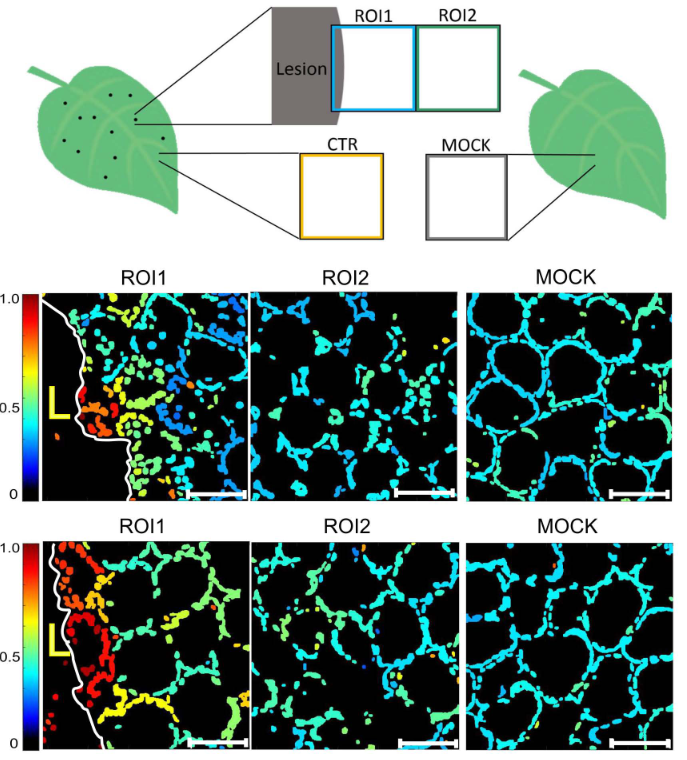
Chloroplast redox state changes mark cell-to-cell signalling in the hypersensitive response (New Phytol)
Plant Science Research WeeklyProgrammed cell death (PCD) plays roles in both developmental and environmental responses across plant species. During pathogen attack, the hypersensitive response can limit spread of infection by orchestrating an organised death of cells around the infection area. A recent study by Lukan et al. demonstrated…
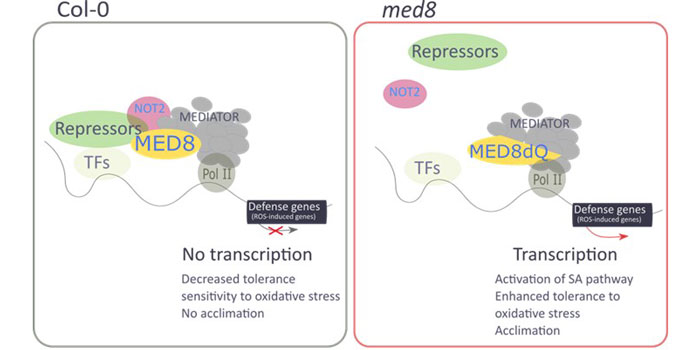
MED8 keeps H2O2-dependent gene expression under control
The Plant Cell: In a NutshellHe et al. demonstrate that Mediator complex subunits have functions beyond their known roles in transcription. Plant Cell https://doi.org/10.1093/plcell/koab079
By Huaming He, Patrick Willems, Frank Van Breusegem, and Amna Mhamdi
Background: Plants often face challenging environments to which they…

Here, there and everywhere: Plastid- and nuclear-localized WHIRLY1 regulates salicylic acid homeostasis during developmental senescence
Blog, Plant Physiology, Plant Physiology: News and Views, ResearchDoes a new job always come with a new location? Perhaps this is true for some plant proteins; half of the proteins are located in more than one subcellular compartment. Emerging evidence in plants shows that nuclear-encoded proteins undergo redox and posttranslational modifications or processing events…

On how to build a larger and healthier Arabidopsis ROSette using a mitochondrial protein (spoiler: reactive oxygen species)
Blog, Plant Physiology, Plant Physiology: News and Views, ResearchJavier Edgardo Moreno
ORCID ID: 0000-0001-9763-5325
Twitter: @JaviMorenoOK
Instituto de Agrobiotecnología del Litoral (UNL-Conicet), Facultad de Bioquímica y Ciencias Biológicas, Universidad Nacional del Litoral
Santa Fe 3000, Argentina
Cellular respiration is at the core…

